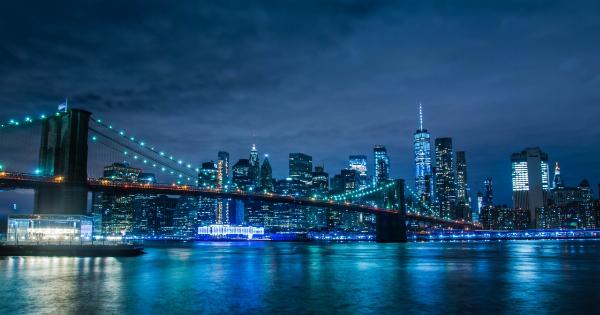Although artificial light has brought significant benefits to modern society, it has also brought some negative effects on human health and the environment. In this article, we will discuss the disadvantages of excessive artificial light exposure.
1. Disrupts Circadian Rhythm
One of the adverse effects of excessive artificial light exposure is the disruption of the body’s circadian rhythm.
The body’s circadian clock is the internal biological clock that regulates the body’s sleep-wake cycle and other physiological functions. Exposure to bright or blue light at night can interfere with melatonin production, the hormone that regulates sleep-wake cycles.
This disruption can lead to sleep disorders, such as insomnia, and affect overall health, including an increased risk of obesity, diabetes, and heart disease.
2. Causes Eye Strain and Fatigue
Excessive artificial light exposure can cause eye strain and fatigue, especially when working in front of computer screens, smartphones, or other electronic devices for long periods.
The blue light emitted from these devices can cause eyestrain, headaches, dry eyes, and blurred vision. Eye fatigue can also affect concentration and productivity, leading to a decrease in work efficiency and quality.
3. Increases Risk of Depression and Anxiety
Studies have shown that excessive artificial light exposure at night can increase the risk of depression and anxiety.
Exposure to blue light, especially in the evening, disrupts the body’s natural production of melatonin, which can lead to mood disorders. Exposure to bright light at night can also disrupt sleep, which can exacerbate the symptoms of depression and anxiety.
4. Leads to Light Pollution
Excessive artificial light exposure also contributes to light pollution, which is the brightening of the night sky. Light pollution can affect wildlife, such as birds and sea turtles, by disrupting their migration and breeding patterns.
Light pollution can also affect humans by decreasing the visibility of stars, which can affect astronomical research, and creating a disturbance of the natural environment.
5. Potentially Increases Cancer Risk
Some studies have suggested that excessive artificial light exposure, especially at night, may increase the risk of certain cancers, such as breast and prostate cancers.
Such studies attribute this to the disruption of the body’s circadian rhythm, which controls the production of hormones, including those that regulate cell growth.
6. Affects Melatonin Production
As stated earlier, exposure to excessive artificial light can disrupt the body’s natural production of melatonin.
Melatonin is the hormone that regulates the body’s sleep-wake cycle and has antioxidant properties that help protect against diseases such as cancer and Alzheimer’s. Disrupting melatonin production can lead to poor sleep quality and an increased risk of diseases.
7. Disrupts Temperature Regulation
The body’s temperature regulation is another natural function that can be affected by excessive artificial light exposure.
Exposure to artificial light late at night can interfere with the temperature regulation process, leading to overheating or hyperthermia. This can cause discomfort, reduce productivity, and affect overall health and wellbeing.
8. Impacts Wildlife
Excessive artificial light can also impact wildlife by disrupting their natural behavior and habitats. Wildlife such as bats, birds, and insects rely on natural darkness to navigate, hunt, and breed.
Exposure to artificial light can disrupt their behavior, leading to a decline in their populations.
9. Increases Energy Consumption
Excessive artificial light exposure also contributes to increased energy consumption, which can affect the environment and electricity bills.
The use of artificial lighting systems in homes, workplaces, and other buildings causes energy wastage and increases greenhouse gas emissions, contributing to climate change.
10. Causes Fatigue and Decreases Productivity
Workers who are exposed to excessive artificial light can experience fatigue and decreased productivity. Employees who work in offices with fluorescent lighting systems often experience headaches, eye strain, and fatigue.
These symptoms can negatively affect their work efficiency and quality, leading to decreased productivity.
Conclusion
Excessive artificial light exposure can have several negative effects on human health and the environment.
Disruption of the body’s natural circadian rhythm, eye strain and fatigue, increased risk of depression and anxiety, light pollution, potential increased cancer risk, disruption of melatonin production, temperature regulation, negative impacts on wildlife, increased energy consumption, and decreased productivity are some of the adverse effects of excessive artificial light exposure.





























